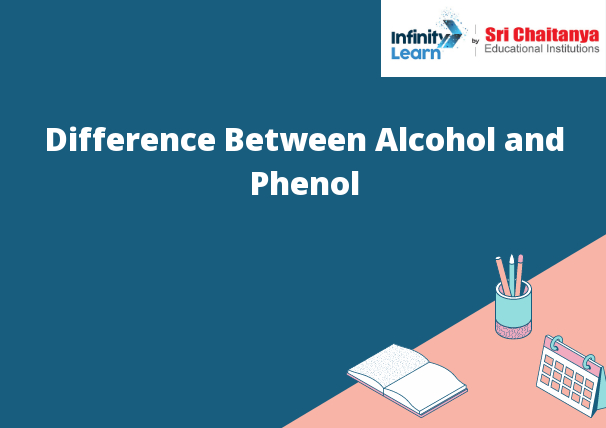Table of Contents
Difference Between Alcohol and Phenol – Explanation
Alcohols are a type of organic compound that contain a hydroxyl (-OH) group. The hydroxyl group is responsible for the alcohol’s characteristic solubility in water and polar character. Alcohols are classified according to their number of carbon atoms. Methanol, ethanol, and propanol are all examples of alcohols with one carbon atom. Phenols are a type of organic compound that contain a hydroxyl group and a benzene ring. The hydroxyl group is responsible for the phenol’s characteristic solubility in water and polar character. Phenols are classified according to their number of carbon atoms. Phenol, cresol, and xylenol are all examples of phenols with six carbon atoms.
Alcohol and phenol are both organic compounds. Alcohol is a hydrocarbon that contains a hydroxyl group (-OH) attached to a carbon atom. Phenol is a benzene ring with a hydroxyl group attached to it.
The main difference between alcohols and phenols is that alcohols are soluble in water, while phenols are not. Alcohols are also less acidic than phenols. This is because the oxygen atom in the hydroxyl group of an alcohol is more electronegative than the oxygen atom in the hydroxyl group of a phenol. This makes the alcohols more polar and less acidic.

Characteristics of Alcoholism
There is no single definition of alcoholism, but it is generally understood to be a chronic and progressive disease characterized by compulsive drinking and a lack of control over alcohol intake. Alcoholics may be able to drink in moderation for a period of time, but eventually their drinking will spiral out of control, and they will be unable to stop drinking even if they want to.
Alcoholism is a physical and psychological addiction to alcohol. Alcoholics may experience cravings for alcohol and feel the need to drink in order to feel normal or to relieve stress. They may also experience withdrawal symptoms such as tremors, anxiety, and nausea when they stop drinking.
Alcoholism can have a devastating impact on both the alcoholic and their loved ones. Alcoholics may lose their jobs, their homes, and their families as a result of their drinking. They may also experience health problems such as liver disease, brain damage, and pancreatitis.
Physical Properties of Alcohol
Alcohol is a colorless, flammable liquid that is the intoxicating agent in beverages such as beer, wine, and liquor. It is produced by the fermentation of sugar or starch by yeast.
Alcohol is a CNS depressant that can cause intoxication, slurred speech, loss of coordination, and even death. It is also a potent antiseptic and is used as a solvent and in medicine.
What is Phenol?
Phenol is an aromatic organic compound that has the chemical formula C6H5OH. It is a white solid that is slightly soluble in water. It is produced on a large scale as a precursor to polycarbonates and other plastics. It is also used in organic synthesis and as a disinfectant.
Physical Properties of Phenol
The boiling point of phenol is 284 degrees Celsius. It is a colorless liquid with a pungent odor. It is soluble in water and is a weak acid.
Differences between Alcohol and Phenol
- The primary difference between alcohols and phenols is that alcohols are soluble in water, while phenols are not. This difference arises from the different structures of these molecules. Alcohols have a hydroxyl (OH) group bonded to a carbon atom, while phenols have a hydroxyl group bonded to a benzene ring. Because of this difference in structure, phenols are not as soluble in water as alcohols are.
- The main difference between alcohol and phenol is that alcohol is a type of molecule that is composed of a chain of carbon atoms, while phenol is a molecule composed of a benzene ring and a hydroxyl group.
- Alcohols are organic compounds that contain a hydroxyl (-OH) group attached to a carbon atom. There are many types of alcohols, and they are classified by the number of carbon atoms in the molecule. The simplest type of alcohol is ethanol, which has just one carbon atom. Phenols are a type of alcohol that have a phenyl group (a ring of six carbon atoms with a hydrogen atom attached to each) attached to the hydroxyl group.
- Alcohols and phenols are both soluble in water. Alcohols are also soluble in other polar solvents, such as acetone and ethyl acetate. Phenols are soluble in water and other polar solvents, but they are also soluble in nonpolar solvents such as benzene and toluene.
- Alcohols are relatively nonpolar, and phenols are relatively polar. This is because the hydroxyl group in alcohols makes the molecule somewhat polar, while the phenyl group in phenols makes the molecule very polar. The polar nature of phenols makes them good solvents for polar substances, such as water. The nonpolar nature of alcohols makes them good solvents for nonpolar substances, such as benzene and toluene.
- Alcohols and phenols have different chemical properties. For example, alcohols are not very reactive, but phenols are very reactive. This is because the hydroxyl group in alcohols is a very weak nucleophile (a molecule that can donate a pair of electrons to form a bond), while the phenyl group in phenols is a very strong nucleophile.
- Alcohols and phenols also have different physical properties. For example, alcohols are liquids at room temperature, while phenols are solids. This is because the phenyl group in phenols makes the molecule more rigid and less soluble in water than alcohols.









